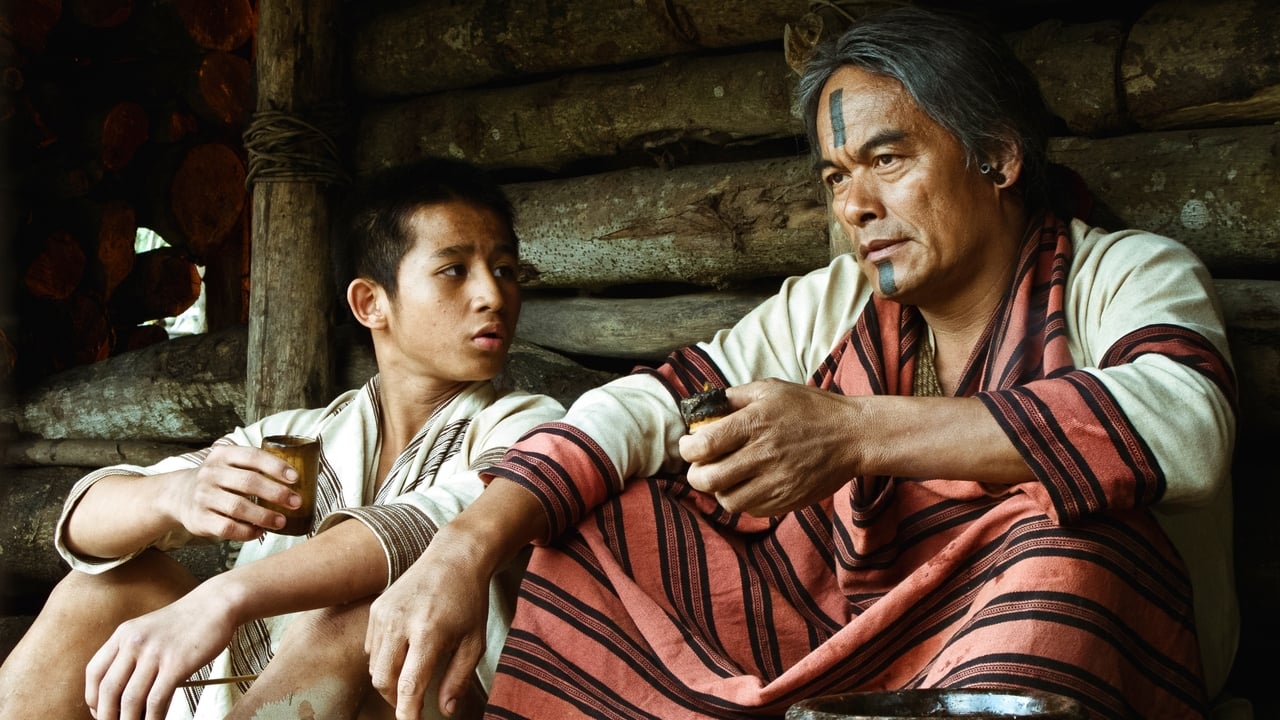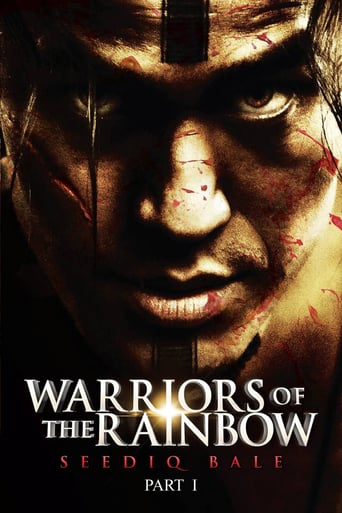

Japan took possession of Taiwan from China when it was ceded to them after China's Qing Dynasty lost the first Sino Japanese war of 1884 – 1885 and we first pick the story up there. The Japanese were a more controlling Colonial force and did not tolerate aboriginals such as the Seediq and called them 'Seiban' or 'barbarians' and treated them as inferiors. They ruled harshly and built up resentments that led to a number of insurrections that led to The Wushe Incident of 1930 that is the central point of this film.The indigenous tribes had also fought one another over hunting grounds and other causes for centuries and the divisions that this caused are exemplified here and indeed how the Japanese exploited such to turn tribes against each other. The chief of the Seediq was Mouna Rudau and he ha tried appeasement but one slight too many pushed him to seek to join the tribes together and make a stand against the vastly better equipped Japanese. Once the die was cast they had all foreseen where it would end.Now this film sticks to the documented facts extremely well, the acting is all excellent and there is a ton of action. It was made in 2011 but some of the CGI is a bit obvious. Despite that this will bring you along for a great roller coaster ride of action. The fight scenes are all done extremely well and when people get hurt they really are hurt. This is a great tribute to the culture of the Seediq and their allies and to a part of history that we have not heard much about. It is also the sort of film you could easily watch again. In aboriginal, Japanese and Hokkien with pretty good subtitles and a run time of just over two and a half hours – every second of which is put to good use – completely recommended.
... View MoreIf you are looking for an epic sized film look no further than the Asian film market. They have cornered the market on delivering huge scale movies on a regular basis like no other. Warriors of the Rainbow: Seediq Bale is not only an epic film it is the most expensive film to ever come out of Taiwan. Produced by John Woo, the film was originally released in Taiwan as two films running at over 4 and a half hours, but released in a single US version at about 2 and a half hours. Can this much be trimmed from a movie a still work clearly enough to keep the film's epic story in-tact and capture audiences? Warriors of the Rainbow is based on the 20th Century history of two warring tribes that not only clashed over the land they inhabited, but also a bigger war against the Japanese as they begin to colonize the island and wipe them out. Forging an alliance with the other tribes, they took the Japanese by surprise only to have to face an unstoppable force as they are attacked by aircraft and poison gas. This is not only a truly epic film; it is one that will leave you with some sort of emotional response. Whether its sadness, anger, or just awe, you cannot walk away from this movie without it affecting you in some way. This is an extremely violent and graphic movie, but is necessary to really convey this little known time in Taiwan history. At first this film feels a bit like Apocalypto then takes a turn to something like Last of the Mohicans, but with a way more violent and deep emotional story. It's hard to believe the amount of action that is crammed into this film and still have such a powerful story. This is a well-made, well-executed film that is hard to watch at times due to the content. Besides the war violence, there is a heavy amount of gore as well as suicide and children being killed that may be hard to watch for some people.This is easily one of the most emotionally charge epic war like movies to come out in a long time. With the amount of content that is included in this film, you can only imagine what else could have been cut out for this condensed US release. If you love Asian cinema, war films, or just great filmmaking, this is a must see film. Just be warned as mentioned before that there are some pretty heavy visuals.http://www.examiner.com/movie-in-dallas/bobby-blakey
... View MoreJust finished the trailer, plan to watch the duo this weekend. I totally understand as a non-Taiwanese or non-Japenese, you wont have the feeling which the director might want to deliver.I believe this kind of movie are everywhere around the world now. Director/writer and movie itself try to tell a story to a huge variety of audience, but what audience can feel only themselves can choose.I have watch a lot of movie based on European history, Australian history, American history or World War I and II. I was kind of confused in the end of these movie, until I check the information from wiki or other website.What I want to say here is its sad if this movie can not inspire you, but this kind of epic style of Taiwanese movie is a huge milestone for every Taiwanese movier.
... View MoreFirst of all it is better to watch the film in full 4.5 hr instead of watching as 2 parts, which is what I did in film fest.Secondly, you have to know a little of history and tradition of Taiwan and roles of aboriginals to truly have a feeling for the movie. Just Wiki "Wushe Incident", and "Taiwanese Aboriginal" and that makes things much better as you watch.Anyway back to the film, the selling point seems to be all the killing, the action, the big budget. However after watching it I've found out it's more about the value of "death" that the film tries to bring to us, and death weights in front of abstract values such as "tradition", "dignity", etc.It's really an entertaining film for sure and throughout the 4.5 hrs time just flies, and you have to adjust yourself to have that desire to discover more about aboriginals believes and ways of living, much like watching documentary films mentality.I can't stop comparing this "Civilization vs. Barbarian" plot to what is happening in middle east right now. In such sense history is repeating, and the film is definitely pointing out how pointless the loss of lives is (depends on which stand you are taking though).Overall this is one of the best and most enjoyable films in recent years. The director is trying to lead us to think critically towards topics on death, values, tradition and how these would change when worlds collide.
... View More